Section 10 of the Oregon Coast Trail begins by walking the remainder of Pistol River Beach and ends at the border between California and Oregon at Crissey Field State Beach. This 30-mile section is comprised of 16.1 miles of well-forested trail, 11.5 miles of road travel (mostly Highway 101), and 3 miles of beach walking. Overall, this final section of the OCT is filled with some of the most breathtaking views of the entire Oregon coast, including the complete ruggedness of the Samuel H. Boardman State Scenic Corridor. But with all its beauty, there is a large portion of paved road to travel.
Tips for hiking the Oregon Coast Trail
The Oregon Coast Trail offers hikers an opportunity to experience the beauty of Oregon’s coastal landscapes and ecosystems in an intimate and continuous way, and it passes through fragile environments. Your awareness of a few additional items can enrich your overall experience on the OCT and help minimize your impact on delicate environments along the way.
- Before departing on your hike, learn the Leave No Trace Seven Principles so that you can practice them while you are out on the trail. The more that people incorporate Leave No Trace into their decisions and habits, the better the outdoor experience will be for everyone.
- Learn about Oregon’s five unique marine reserves. Marine reserves are areas that have been set aside for study, research, and conservation; it is illegal to remove any marine life from a marine reserve, and they are also protected from any development. Marine protected areas, which are often adjacent to reserves, allow some fishing and development. Marine reserves are wonderful areas to observe wildlife and take in Oregon’s beautiful coastal scenery. Fortunately, Oregon’s marine reserves couldn’t be more accessible than when hiking the OCT. From north to south they include:
- The islands and sea stacks along the coast are protected as part of Oregon Islands National Wildlife Refuge. They provide crucial nesting habitat for seabirds and pupping/resting sites for seals and sea lions. All seabirds and marine mammals are protected by federal law and are sensitive to human disturbance. For this reason, all islands and sea stacks are closed to public access year round.
- Portions of the trail meet the ocean's waterline and may only be passable at low tide. Excercise caution and safe judgement; wait for appropriate tidal conditions in these areas, and always watch for sneaker waves.
- Pay special attention to areas signed and posted as snowy plover habitat. A handful of Oregon’s beaches and estuaries provides critical habitat for the western snowy plover, a species that the U.S. Fish and Wildlife Service listed as threatened in 1993. The breeding season for the western snowy plover is from March 15 to September 15, and during this time it is imperative to avoid potential nesting locations in dry sand beach areas. Dogs, kites, bikes, and vehicles are all prohibited from March 15 to September 15, and walking is only allowed on hard-packed wet sand. Please do your part to help this threatened species survive by complying with posted restrictions and completely avoiding closed areas. There are designated snowy plover areas from Fort Stevens to Floras Lake, and hikers should be aware of their locations. To learn more, be sure to check out these snowy plover resources:
- The Oregon coast is generally a very dog friendly location, and dogs are allowed on most beaches, state parks (when on a leash) and other coastal public lands. However, there are specific times and locations when dogs are not permitted in certain areas, such as beaches and estuaries identified as snowy plover habitat during nesting season. Please pay attention to posted signage and respect times and areas where dogs are prohibited.
- For those interested in hiking the OCT in sections, or even just accessing the trail for day hikes, take note that recreation fees and passes are required at several federal recreation sites. If you will be parking at one of the state or federal fee area recreation sites, make sure to pick up the applicable recreation pass such as an Oregon Coast Pacific Passport.
Pistol River to Indian Sands

This section kicks off with the continuation of beach for 1.5 miles south of Pistol River. At the end of the beach, where Hidden Creek flows into the ocean north of Crook Point, look for an old weathered post marking the OCT. Follow this trail as it meanders through the forest and over patches of sand to Highway 101. Once along Highway 101, many hills, troughs, and turns must be walked before you step foot onto solid trail once again. Stay on Highway 101 for an extra mile until you pass the large entrance sign to Samuel H. Boardman State Scenic Corridor. Just after this sign, take one of the several trails leading from the turnout and walk south.
Samuel H. Boardman is often referred to as the father of Oregon’s state parks because his tireless efforts helped the state acquire tens of thousands of acres for the citizens of Oregon to enjoy. In 1929 Boardman became the very first superintendent of all Oregon State Parks. As superintendent, he personally oversaw negotiations with landowners and the Oregon Highway Commission to purchase plots of land that would become some of Oregon’s nationally known parks. The assembly of Samuel H. Boardman State Scenic Corridor was one of Boardman’s final tasks as superintendent, and it was named after him at the time of his retirement. As you walk through this 14-mile section of trail, appreciate the efforts and generosity of those who worked to make this land available to everyone.
This beloved section of public land has too many picturesque views and opportunities for exploration to describe in detail, but a short overview of the trail will provide a sufficient sample. As mentioned previously, Samuel H. Boardman State Scenic Corridor boasts a very rugged coastline with hundreds of sea stacks ranging from small slivers to massive, forested plateaus. Ruggedness is the main reason the final section of the OCT has so few miles on the beach; in fact, beaches are mostly either nonexistent or isolated and difficult to reach. Many offshoots of the official trail lead to these beaches or hidden vantage points; in most cases the OCT is discern.
The Oregon Coast Trail in Samuel H. Boardman State Scenic Corridor weaves, dips, and rises through the thick coastal forest, the majority of which is layered with a thriving understory largely composed of western sword fern. On days where a light fog hangs in the forest, magnificent beams of light penetrate the overstory and illuminate lines of ferns or grass. Portions of the trail devoid of ferns, blackberry, and grasses have a brooding aura, and the forest floor is primarily covered with broken branches and fallen trees. An overcast afternoon creates a shadow over these sections and adds to the feeling that one is walking through a haunted forest. Patches of forest like this are not uncommon in Samuel H. Boardman State Scenic Corridor, but they are typically short, and the abundance of understory returns quickly, another reason this trail is so mystical.
Further adding to the mysticism and wonder of this section are unique locations such as Secret Beach, Natural Bridges, and Indian Sands. Secret Beach is the perfect location to view the sunset on a clear day, and it is also a great spot to pitch a tent. Sea stacks slice the beach into several portions, the furthest of which are only accessible at low tides. It’s recommended to take the time to explore this small beach before moving on. Just south of Secret Beach is Natural Bridges, where two large rock arches allow waves to crash into a pristine, sheltered cove. After crossing the 345-foot Thomas Creek Bridge, the tallest bridge in Oregon, a sprawling dunescape overlooking the ocean known as Indian Sands awaits.
Lone Ranch Beach to Crissey Field State Beach
 The trail emerges from the forest and onto Highway 101 a little over a mile south of Lone Ranch Beach, marking the last section of wild trail on the OCT. With the exception of the detour through Harris Beach State Park and the final stretch on Crissey Field State Beach, the rest of the OCT is on paved road through Brookings, Oregon.
The trail emerges from the forest and onto Highway 101 a little over a mile south of Lone Ranch Beach, marking the last section of wild trail on the OCT. With the exception of the detour through Harris Beach State Park and the final stretch on Crissey Field State Beach, the rest of the OCT is on paved road through Brookings, Oregon.
Brookings, like many other coastal towns in Oregon, is quaint and welcoming. Shops, restaurants, and accommodations line the highway through town. Wooden carved statues and large sweeping murals frequent the town’s walkways and wall sides. The path leads over the Chetco River Bridge and into Brookings Harbor, where many vessels are docked, and there are a few tourist restaurants that sit along the river. Once you reach Oceanview Drive, 3.5 miles of oceanside residences on the right and agricultural land on the left sits between you and Crissey Field State Recreation Area.
The shortest and preferred route is to walk through the Winchuck State Recreation Site, just before crossing the Winchuck River, and onto the beach. However, due to the changing river conditions, this route is not always accessible. If that is the case, continue across the Winchuck River and take the next available opportunity to walk through Crissey Field and onto the beach. A rather anti-climatic ending awaits because there is no official designation to the end of the Oregon Coast Trail. The best way to know for certain is by using mapping software that details your location and the Oregon and California border. Congratulations, you have finished the Oregon Coast Trail!
Note that there is no overnight parking at the Crissy Field Welcome Center; parking is for day use only.
Risks of hiking road sections
Although officially designated as a trail over 40 years ago, the OCT is an ongoing project and not yet a single continuous hiking trail. Gaps in the trail, usually caused by rivers, bays, or rocky headlands, require hikers to walk along busy roads (often U.S. Highway 101) that are not designed for pedestrian use. Oregon Parks and Recreation Department and other public and nonprofit agencies, including local cities and counties along the Oregon coast, are working to eliminate these breaks by establishing trails to connect trail segments and beaches.
In 2016, the Oregon legislature enacted legislation requiring OPRD to complete an action plan that will identify steps needed to complete the trail. This planning effort will identify key stakeholders and document the current status of trail completion, evaluate and assess alternatives for completing trail segments, and seek funding to complete new trail sections.
Until the trail is completed, OCT hikers will have to decide whether they choose to walk along the shoulder of the highway that is, in fact, currently an official part of the trail. It is important for OCT hikers to understand the risks of walking along the highway portions of the OCT. The most prevalent dangers are being hit by a vehicle or being struck by debris kicked up by or flying out of a passing vehicle. In addition, some highway sections along the Oregon Coast Trail are longer and more difficult than others. These highway sections are detailed in each section's guide.
Public safety is of the highest concern at Outdoor Project, and we do not condone walking along roads without a designated pedestrian path. We support utilizing other modes of transportation to connect the trail and beach sections such as public transportation, private shuttle or taxi, biking, ferry, or completing the Oregon Coast Trail in hiking sections to avoid the highway altogether. Two great resources for finding alternative transportation are Google Transit (Google.com/transit), Visit The Oregon Coast (visittheoregoncoast.com/transportation/), and an internet search for taxis or other transportation alternatives in the town nearest to the trail break. There are also ferry services available to cross the Nehalem River, Tillamook Bay and the Umpqua River, and these will greatly reduce the amount of highway miles one must walk. Note that ferry boats do run on a regular schedule and must be reserved in advance. More information on each of these ferries is found in Section 2 and Section 6.
This guide provides information needed for hikers who do choose to walk the trail in its entirety, including those portions along the highway. We urge those hikers to exercise caution to ensure a safe and enjoyable hike on the OCT.
For further information on the Oregon Coast Trail, be sure to check out these articles:
- Oregon Coast Trail Overview
- Oregon Coast Trail Section 1: Fort Stevens State Park to Oswald West State Park
- Oregon Coast Trail Section 2: Oswald West State Park to Tillamook River Bridge
- Oregon Coast Trail Section 3: Tillamook River Bridge to Bob Straub State Park
- Oregon Coast Trail Section 4: Pacific City to Otter Rock
- Oregon Coast Trail Section 5: Otter Rock to Heceta Head
- Oregon Coast Trail Section 6: Heceta Head to North Bend
- Oregon Coast Trail Section 7: North Bend to Bandon
- Oregon Coast Trail Section 8: Bandon to Humbug Mountain State Park
- Oregon Coast Trail Section 9: Humbug Mountain State Park to Pistol River
Logistics + Planning
Preferable season(s)
Congestion
Parking Pass
Open Year-round
Days
Pros
Cons
Trailhead Elevation
Highest point
Features
Typically multi-day
Permit required
Location
Nearby Adventures
Nearby Lodging + Camping
A profound concept originally envisioned by governor Oswald West, in 1967 the Oregon legislature ultimately realized his vision of making the entire Oregon Coast forever open to the public in a piece of landmark legislation titled the Oregon Beach Bill, officially making all 363 miles public land. "The People's Coast" is truly a one-of-a-kind coastline, a unique blend of mountains and rocky stacks, towering old growth forests, marine sanctuaries, tide pools and kelp forests, charming towns, historic fishing communities, world-class golfing, breweries, and simply jaw-dropping scenic beaches. We encourage you to plan your next trip at visittheoregoncoast.com or by calling (541) 574-2679.

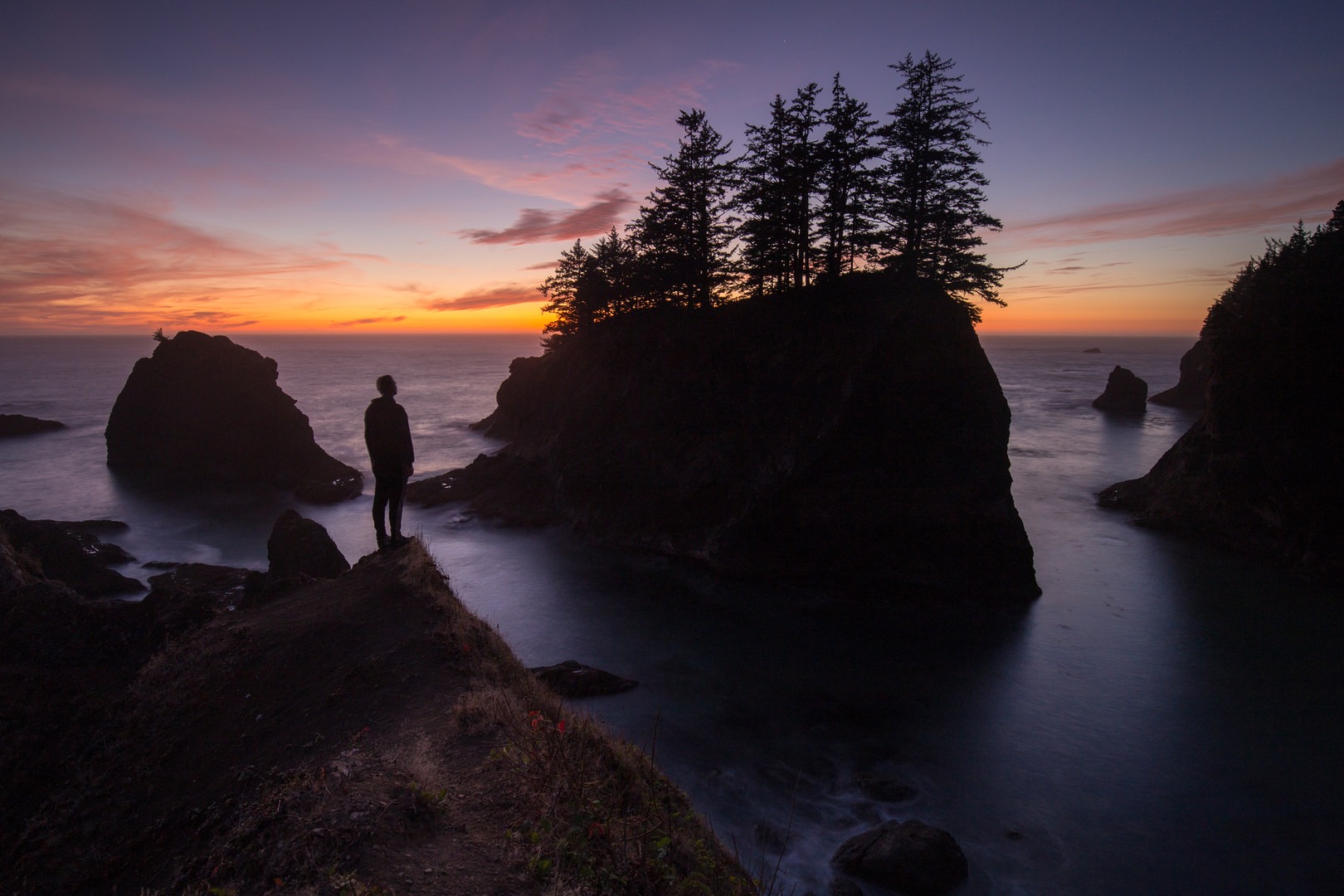

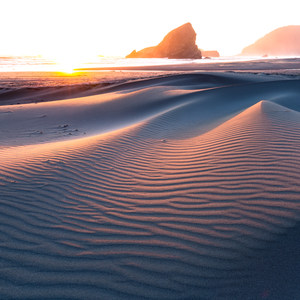
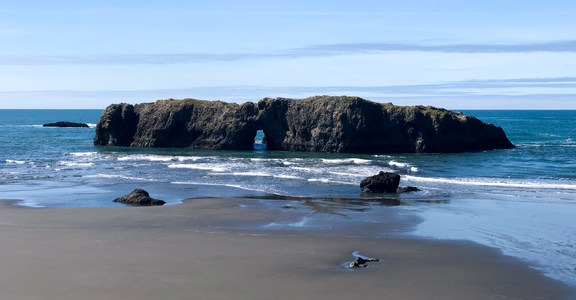
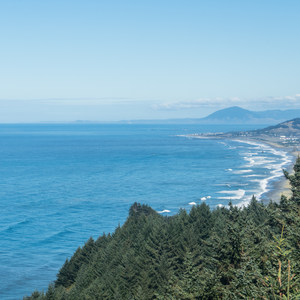
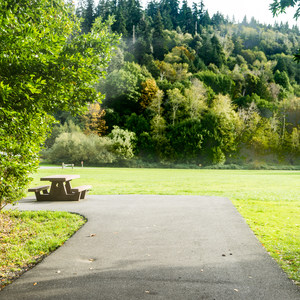
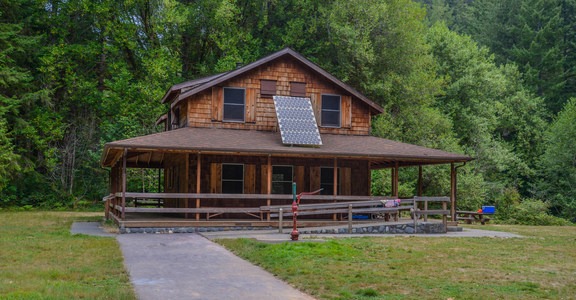
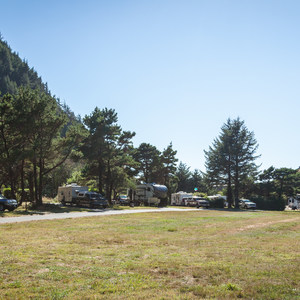
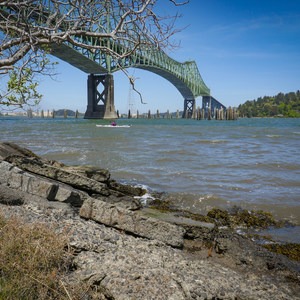
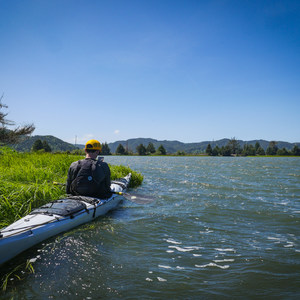
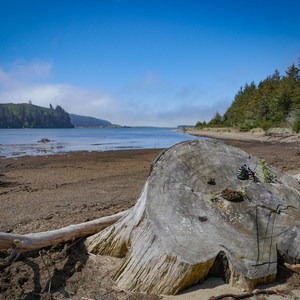
Comments
Sign In and share them.